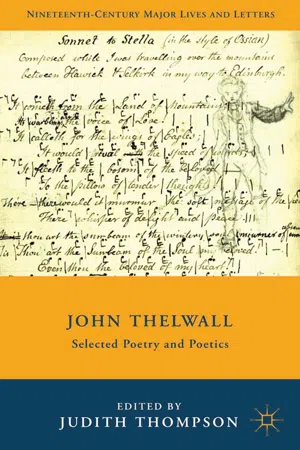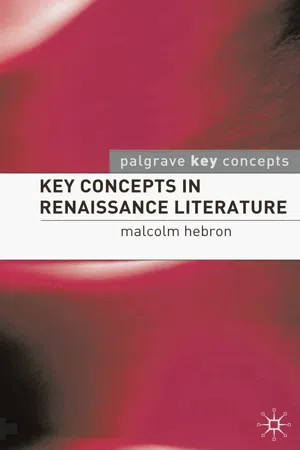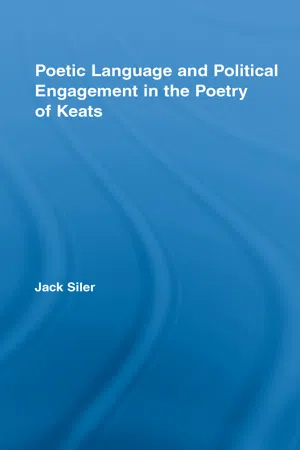Literature
Ode
An ode is a type of lyrical poem that expresses deep feelings of admiration, love, or respect for a person, event, or object. It often has a formal structure and elevated language, and is characterized by its celebratory and exalted tone. Odes have been a popular form of expression in literature, with famous examples including John Keats' "Ode to a Nightingale" and Pablo Neruda's "Ode to My Socks."
Written by Perlego with AI-assistance
Related key terms
1 of 5
4 Key excerpts on "Ode"
- eBook - ePub
A Little Book on Form
An Exploration into the Formal Imagination of Poetry
- Robert Hass(Author)
- 2017(Publication Date)
- Ecco(Publisher)
READING THE Ode 1. So the Ode, as a praise poem, probably emerged from the twinned forms of prayer and litany. Odes—here is a way to think about them—are about trying to get into right relation to an imagined good or power. Or, to say it the other way, they are about not being in possession of some desired good or power. If you were in possession of it, you wouldn’t need to address it. 2. In this sense every love poem, every prayer, most descriptive poems, most poems that think through ideas (because the completed thought is the desired good) belong to the gesture of the Ode. In this sense, “Western Wind” is a very short Ode: O Western wind, when wilt thou blow? The small rain down doth rain. Christ! That my love were in my arms And I in my bed again! And even this small, astonishing poem by Bashō, about not being in possession of what you are in possession of, is an Ode: Even in Kyoto, Hearing the cuckoo’s cry I long for Kyoto. 3. The Ode is a request form, so it is a quest form, a motion-toward form, and it is therefore also inescapably a distance-from form, so that the membrane between Ode and elegy, between desire and mourning, is in the best poems very permeable. That’s why Coleridge could call his poem “Dejection: An Ode.” Keats seems to have understood this very clearly in “Ode on a Grecian Urn” and “Ode to a Nightingale,” and it is what gives those poems—and the great “To Autumn”—their aching beauty. Probably the clearest statement of the case is Emily Dickinson’s “I Cannot Live with You,” a poem made of a litany of reasons why the lovers want each other too much to ever get together - eBook - ePub
John Thelwall
Selected Poetry and Poetics
- J. Thompson(Author)
- 2015(Publication Date)
- Palgrave Macmillan(Publisher)
Comp. c 1819Pub. Recreations 1822In the second of his three essays on the Ode, Thelwall defines the form in a characteristically paradoxical manner. He says that its essence is enthusiasm, excursiveness, and diversity in mOde and meter; yet, as in his teaching of prosody, he is also prescriptive, insisting upon formal control and regularity, and disclaiming all anarchy. At the same time, he spends more time talking about exceptions or improvisations (“divertisements”) than giving “correct” examples, and this is even more true of his own practice. This apparent contradiction may be resolved by recognizing that the test of the Ode’s excellence is the ear: it must never be disappointed of its “expected responses.” Once again, the foundation of the Ode, as of all forms and sounds of poetry, is correspondence, the “paramount law of all reiterated or progressive motion, organic or mechanical.”From Essay II: On the Characteristics and Composition of the OdeThe term “Lyrical Poetry,” should properly include every species of poem calculated to be sung, or performed with the accompaniment of musical instruments; and, strictly, it should include no other. It is frequently, however, applied to almost every kind of measure but the stately heroic, the elegiac and the epistolary, and especially to every species of diversified and irregular metre. “The curse of Kehama”2 may by some be regarded as a Lyrical Poem, because the rhythmus is so wild that it is difficult to conceive how the Lyre could accompany it; or how it could be set to any kind of tune.3Lyrical Poetry, then, properly so called, may be considered as of three kinds or descriptions. These include—the Ode, the Ballad and the Song:—as for the Air, it is only a brief, or minor sort of Song—or it may be considered as a member of a fourth and more ample species of lyrical poetry; that is to say, of the Lyrical Drama, or Opera—of which, together with the bravura (a species of Ode) and the recitative, it is a component part. - eBook - PDF
- Malcolm Hebron(Author)
- 2008(Publication Date)
- Bloomsbury Academic(Publisher)
The Horatian Ode was a mOdel not only of a certain kind of writing, but also of a style of living, aspired to by an educated gentry who wished to live cautiously but decently on their country estates. Odes in turn can be subdivided according to subject, and two important kinds to note are the prothalamion (celebrating a betrothal) and the epithalamion (in honour of a wedding). Lyrics of this kind were regularly commissioned, or offered, to honour state weddings. The best-known examples from the Renaissance, however, are the Prothalamion and Epithalamion of Edmund Spenser ( c .1552–1599). These poems celebrate his own marriage in elaborate mythological imagery and rich verbal music (and employ a complex symbolic numerological scheme). Their 164 T e x t s ‘golden’ richness of image and joyful tone make a striking contrast with the later Jonsonian voice. Satire Satire can be a mOde of writing which can occur in the course of a work but not define it. When it describes a whole work, we can consider it as a genre, concerned with the critique of human vices and customs. Satire may involve techniques of caricature and ridicule, but it is not neces-sarily comic. Donne’s Satire III is a serious meditation on the merits of the different Christian churches. It uses such devices as satirical person-ification to depict those who adhere to different confessions, such as the Calvinist Crants who ‘loves her only who at Geneva is call’d / Religion, plain, simple, sullen, young ’ (50–51). The aim of formal satire like this is not to mock but to present a vivid and effective depiction of certain kinds of social and personal defect, for both the enjoyment and also the moral edification of the reader. Sonnet A sonnet is a particular form of poetry which in the vogue for sonnet sequences took on the expectations associated with a genre. See the entry on Sonnet for discussion. Conclusion These types of lyric occur frequently in Renaissance poetry, but they certainly do not encompass it. - Jack L. Siler(Author)
- 2013(Publication Date)
- Routledge(Publisher)
Chapter Three The Odes
DOI: 10.4324/9780203625477-4Widely hailed as their essential attribute, the semantic plentitude of the Odes is ideally suited to the kind of close analysis encouraged by the radical innovation of Formalism and the New Criticism, but this critical practice must now recognize its own historicalness and make an effort to understand the separation of poetry and art as a relative autonomous sphere from the life praxis as one that develops historically. We must learn to look beyond the conundrum of subjective interpretation towards a material praxis that considers the historical scope of the institution of art without neglecting the pathos of individual poems or groups of poems. Such an effort allows for a discussion of the Odes individually, as a group, and as an intersection of cultural politics and artistic practice.Reading the Odes in isolation from the development of the poet’s rapidly developing aesthetic conceptualizations, or from the social and political turmoil that surrounds them, encourages the erroneous conception that Keats’s sudden and seemingly effortless outburst of high lyricism in the spring of 1819 occurred all at once as a happy resolution or poetic deliverance from the longer and sometimes incoherent labors of the early poems. In view of the poet’s restless searching for poetic identity and artistic method made visible in the various levels and kinds of artistic engagement found in the lyrics, they represent a mature reflection on the problems that overshadow his career as a poet, a reflection that involves both internalization and projection, emotion and action, pathos and praxis. As a series of progressive meditations on the nature of the creative process the Odes extend the poet’s involvement in “Negative Capability” to something more than “being in uncertainties, Mysteries, doubts, without any irritable reaching after fact and reason” (Letters I, 193). This loosely conceived aesthetic notion now comes to embrace certain premises and attitudes that question the very “sense” of a poetry that is ironically derived from these problems. The larger formulation involves his habitual distrust of “Dogmas” and “seeming sure points of Reasoning” (Letters I,
Index pages curate the most relevant extracts from our library of academic textbooks. They’ve been created using an in-house natural language model (NLM), each adding context and meaning to key research topics.



